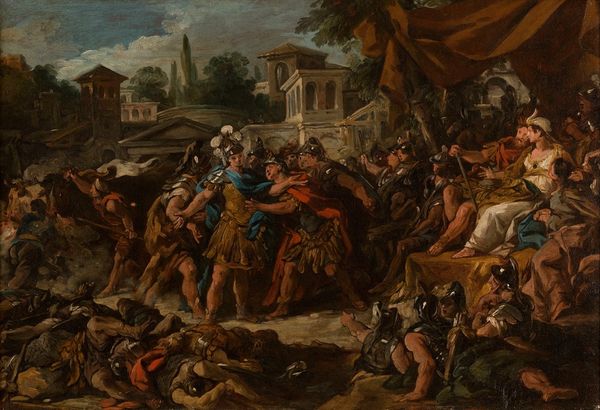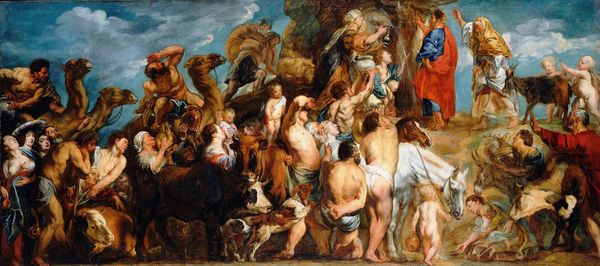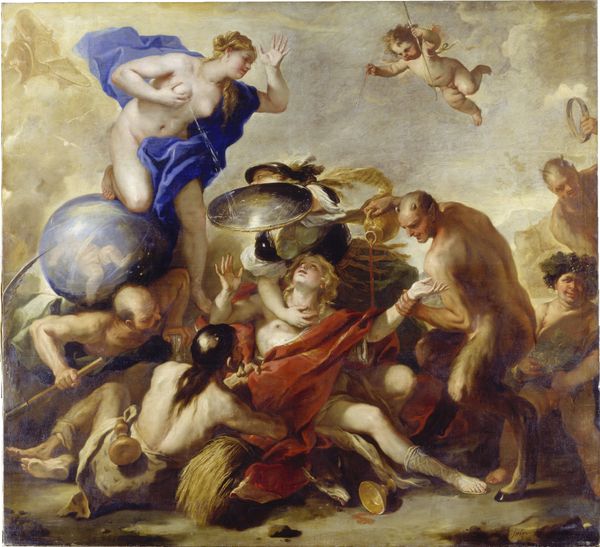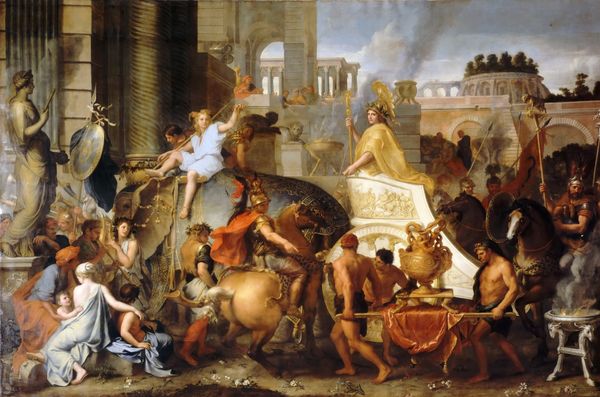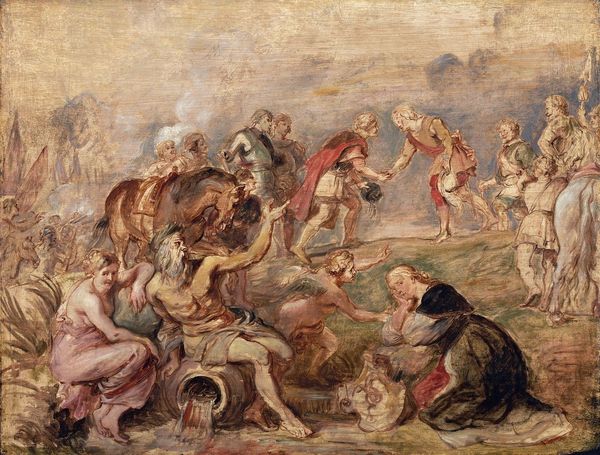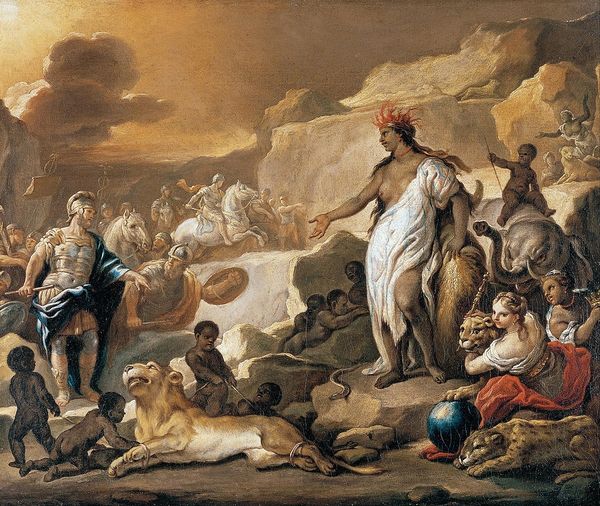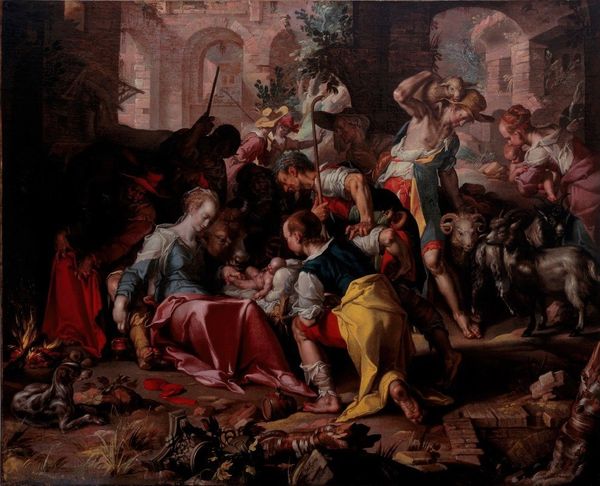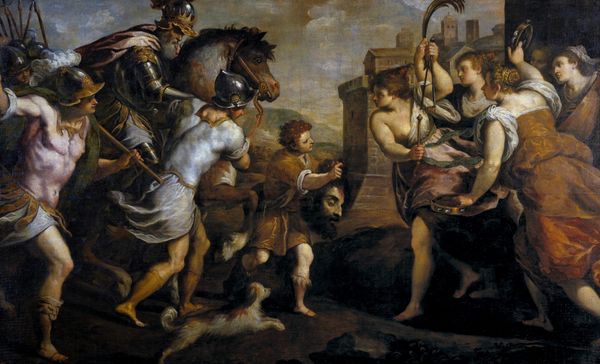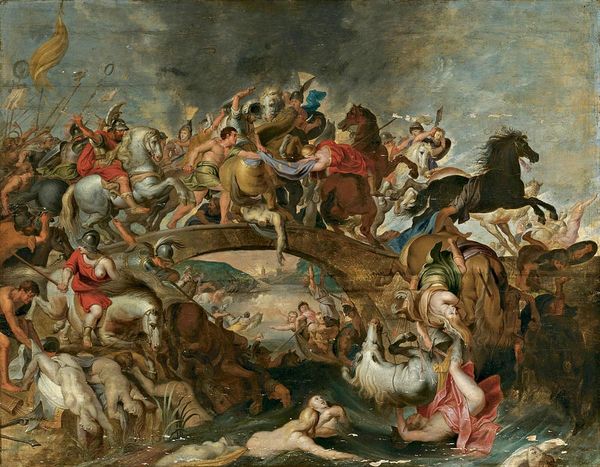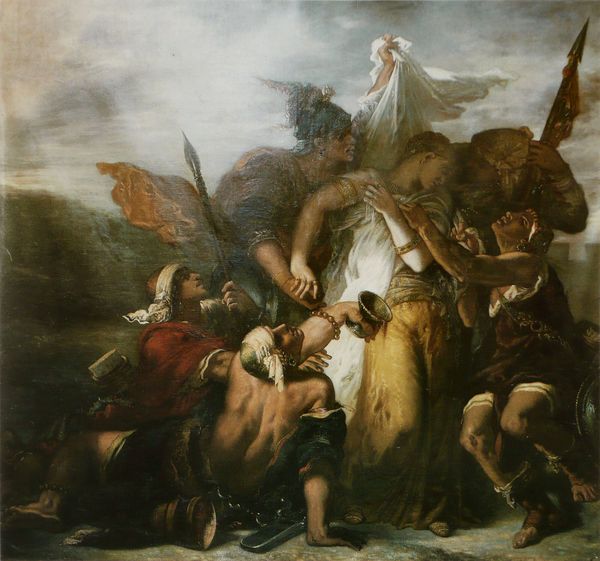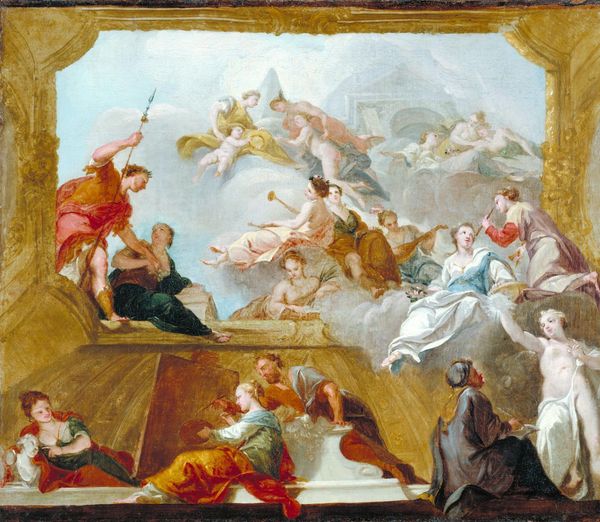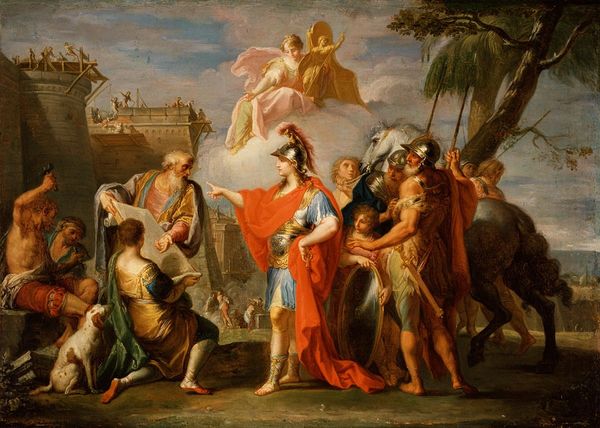
oil-paint
#
action-painting
#
gouache
#
baroque
#
oil-paint
#
figuration
#
oil painting
#
mythology
#
painting painterly
#
genre-painting
#
history-painting
Copyright: Public Domain: Artvee
Editor: So, we have Sebastiano Ricci's oil on canvas, "The Battle of the Lapiths and Centaurs," created around 1705. The scene is quite chaotic; there's a strong sense of movement and, honestly, violence. What’s your read on this work? Curator: It's fascinating how Ricci interprets this classical subject, particularly given the art market of his time. Paintings like this served not just as decoration, but also as cultural capital. The elite demonstrated their knowledge of classical literature through works like these. How do you think Ricci is engaging with the tradition of history painting here? Editor: Well, he certainly ramps up the drama. The bodies are intertwined, almost like a dance of brutality, but I guess that could also be typical of the Baroque style, right? It almost feels operatic. Curator: Precisely. Ricci presents history with a theatrical flair characteristic of the late Baroque. Consider also where this painting might have been displayed – perhaps in a grand hall or a private collection, places of power. The chaotic battle scene then serves as a dramatic, even didactic, backdrop to the patron's world. Does understanding this influence how we view the piece? Editor: Absolutely! Seeing it as less about historical accuracy and more about making a statement, an *impression,* changes everything. So it’s not just what’s depicted, but *why* and for *whom.* Curator: Exactly. Ricci wasn't aiming for historical truth. He was constructing an image that would resonate with specific viewers in a specific social context, reinforcing certain ideas about power and classical ideals. Editor: This really changes how I look at paintings from this era. I will pay attention to these social factors from now on. Thank you! Curator: And I learned as well by speaking about this today. This consideration makes every artwork even richer!
Comments
No comments
Be the first to comment and join the conversation on the ultimate creative platform.
